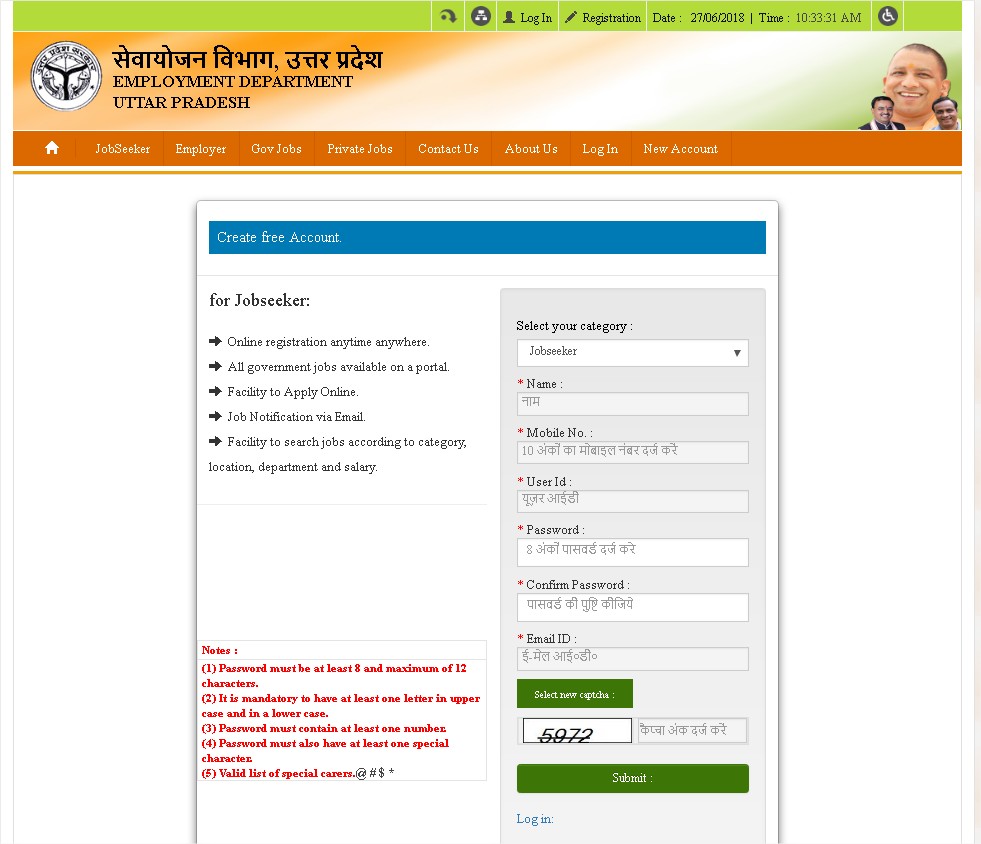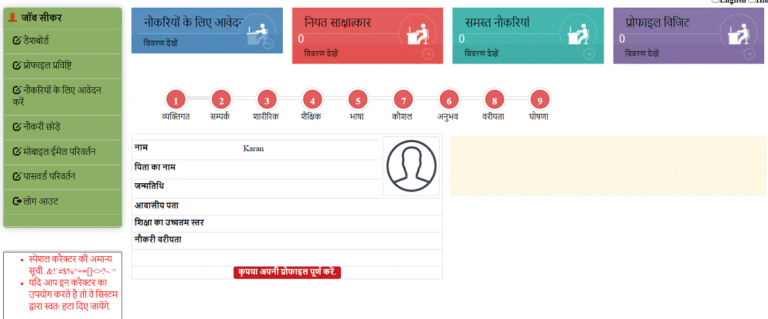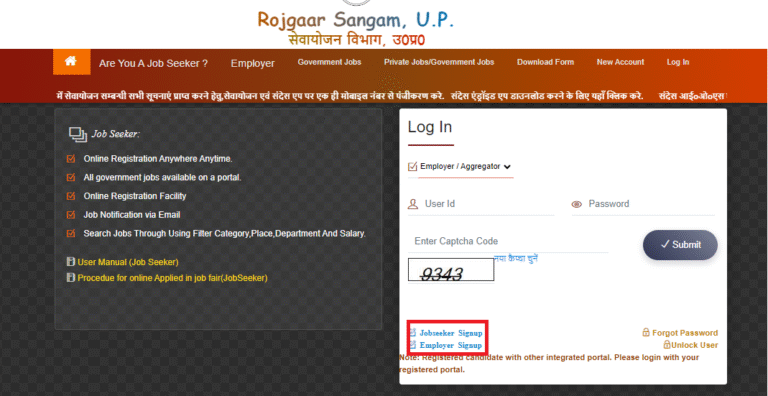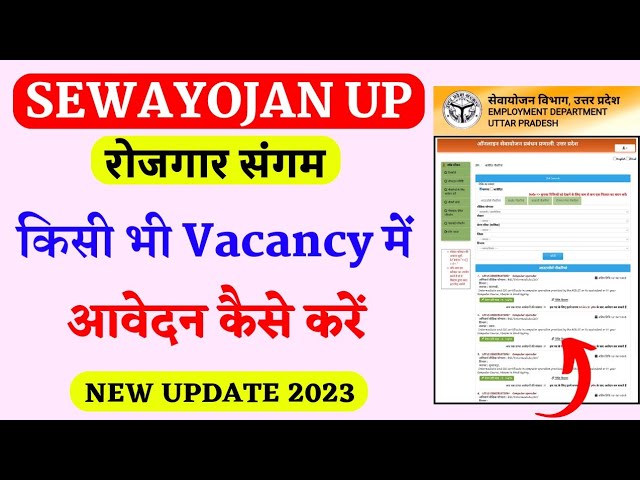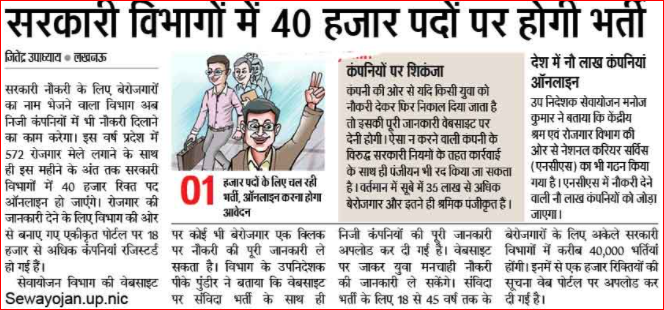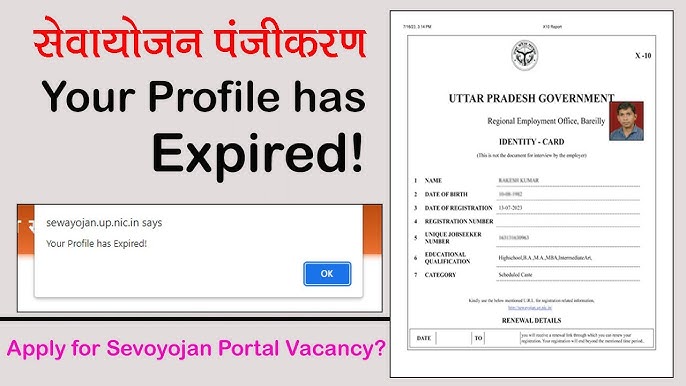Sewayojan ts.nic.in: A Comprehensive Guide to Telangana’s Employment and Social Welfare Portal
Sewayojan ts.nic.in has emerged as a pivotal online gateway for jobseekers, employers, and welfare administrators across Telangana. Designed to streamline employment services, social welfare initiatives, and state-level workforce planning, the portal is more than just a registry — it is a coordinated response to regional challenges such as unemployment, underemployment, rural distress, women’s workforce participation, and skill gaps. In this exhaustive guide, we’ll explore the history, objectives, architecture, implementation, state-level impact, success stories, challenges, comparisons with other schemes, and the likely future trajectory of sewayojan ts.nic.in. This article aims to be authoritative, research-informed, and user-friendly for policymakers, practitioners, and citizens seeking a deep understanding of the portal and its role in Telangana’s socio-economic ecosystem.
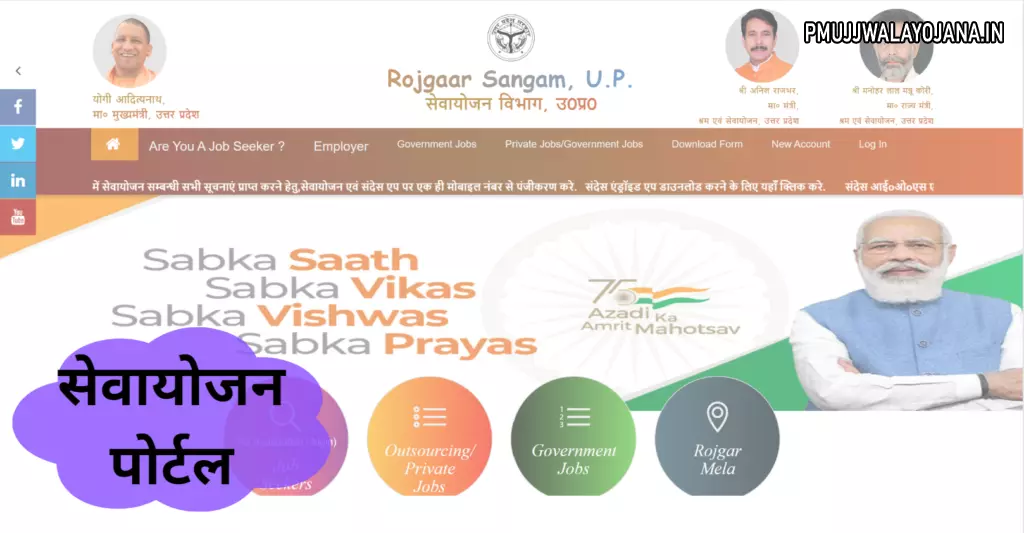
Understanding Sewayojan ts.nic.in: What the Portal Is and Why It Matters
Sewayojan ts.nic.in is the digital face of the Telangana state’s employment facilitation and social welfare programs. It consolidates job listings, employer vacancies, candidate registrations, skill-matching services, and scheme-specific workflows into a unified platform. In practical terms, sewayojan ts.nic.in reduces friction between job demand and supply, improves transparency in scheme delivery, and provides data-driven insights for government planning. By hosting centralized information about state-wise benefits, capacity-building programs, and women empowerment schemes, the portal strengthens service delivery while making it easier for citizens to access opportunities.
Sewayojan ts.nic.in also plays an essential role in rural development by linking rural workers with state-sponsored employment programs, private sector jobs, and local enterprise initiatives. Regarding social welfare initiatives, the portal helps ensure that benefits reach eligible populations through digitized enrolment, minimization of leakages, and better monitoring.
Historical Context: How Sewayojan ts.nic.in Came to Be
The digital transformation of public services has been a central pillar of India’s e-governance goals. Telangana, since its formation, has prioritized technology-driven citizen services. Sewayojan ts.nic.in evolved from this strategic push for digital governance combined with acute local needs:
-
Pre-digital era: Employment exchanges and manual registries were the primary mechanisms for job-seekers. Paper-based systems were slow, error-prone, and lacked real-time analytics.
-
Early digitization: Initial online job portals and skill mission initiatives attempted to modernize outreach, but fragmentation across departments limited impact.
-
Integrated design: Recognizing the need for a single source of truth, sewayojan ts.nic.in was conceived to integrate employment, training, and welfare services under one user-friendly interface.
-
Data-driven governance: The portal’s development reflected a move toward data analytics for policy design—allowing the state to map skill shortages, track beneficiary outcomes, and optimize program funding.
The history of sewayojan ts.nic.in is therefore rooted in administrative reform, technological advancement, and a persistent effort to bridge the gap between policy intent and citizen delivery.
Objectives of Sewayojan ts.nic.in
At its heart, sewayojan ts.nic.in pursues several interlinked objectives that go beyond simple job posting:
-
Facilitate immediate job linkage: Provide a real-time marketplace connecting jobseekers with employers across public and private sectors.
-
Enable skills matching: Match candidates’ qualifications and certifications to employer requirements, incorporating state skill mission data where available.
-
Support women empowerment: Prioritize listings and schemes that uplift women through targeted employment drives, entrepreneurship support, and training.
-
Strengthen rural livelihoods: Promote rural placement, MGNREGA coordination, and local enterprise employment to reduce urban migration pressures.
-
Streamline social welfare delivery: Use the portal to identify eligible beneficiaries and channel scheme benefits efficiently.
-
Provide analytics for policy: Generate actionable data for planners—unemployment hotspots, sectoral skill gaps, and outcomes from interventions.
-
Promote transparency and accountability: Digitize records, audit trails, and enrollment histories to reduce leakage and increase citizen trust.
These goals position sewayojan ts.nic.in as an instrument of inclusive growth—balancing employment creation, social protection, and capacity-building.
Architecture and Key Features of the Portal
Sewayojan ts.nic.in is built to be intuitive yet powerful. Some of the portal’s core features typically include:
-
Candidate Registration and Profiles: Jobseekers create digital profiles, upload resumes, skill certificates, and select job preferences.
-
Employer/Vacancy Listings: Organizations post vacancies, shortlist applicants, and schedule interviews through the platform.
-
Skill-Based Matching Engine: Automated matching recommends suitable candidates to employers and suggests training to jobseekers.
-
Training and Scheme Enrollment: Integration with training providers and welfare schemes allows users to enroll in relevant programs.
-
Dashboard and Analytics: Administrators access dashboards showing registration trends, placement rates, and demographic breakdowns.
-
Grievance Redressal and Support: Built-in mechanisms for complaints, application tracking, and helpline support.
-
Mobile Accessibility: Mobile-responsive design or dedicated apps ensure reach in remote areas where smartphones are the primary internet device.
Technically, an effective portal like sewayojan ts.nic.in connects front-end user interfaces with secure back-end databases, authentication layers, and APIs for interoperability with other government systems (such as Aadhaar verification and skill certification databases).
Implementation Strategy: How the State Rolled It Out
Successful rollout of a portal such as sewayojan ts.nic.in typically involves phased and carefully coordinated steps:
-
Stakeholder consultations: Involving employers, training institutes, local governments, and civil society to align features with ground realities.
-
Pilot testing: Launching pilot districts or sectors to iterate based on user feedback.
-
Capacity building: Training district employment officers, nodal points, and frontline staff to assist citizens in registration and navigation.
-
Awareness campaigns: Conducting outreach through gram sabhas, community centers, social media, and local media to maximize adoption.
-
Interdepartmental linkages: Ensuring the portal communicates with labor, social welfare, women & child development, and rural development departments.
-
Monitoring and evaluation: Regularly assessing metrics—registration volumes, placement conversions, scheme enrollments—and adapting policies accordingly.
These implementation choices matter. For instance, strong field-level support—help desks at mandal offices—can be the difference between a marginalized citizen using sewayojan ts.nic.in and one being excluded from its benefits.
State-Level Impact: How Telangana Benefits
Sewayojan ts.nic.in contributes to Telangana’s socio-economic development across several vectors:
Enhancing Labour Market Efficiency
By reducing search frictions, the portal accelerates matching between employer needs and available talent. Faster matches decrease vacancy durations, raise productivity, and improve wage discovery.
Promoting Equitable Access
Digital platforms like sewayojan ts.nic.in reduce geographic disparities by making opportunities visible to rural citizens and women who may otherwise be disconnected from urban job markets.
Bolstering Women’s Workforce Participation
Targeted schemes and a women-friendly interface (e.g., separate registration channels, listings for flexible jobs, and entrepreneurship support) particularly empower women. These features can increase female labor force participation and economic independence.
Strengthening Rural Livelihoods
Sewayojan ts.nic.in’s coordination with rural development and employment guarantee programs ensures that rural workers can find both local and external opportunities that complement seasonal agricultural incomes.
Informing Policy and Budgeting
Data from sewayojan ts.nic.in provides policymakers with precise indicators—location-based unemployment rates, popular skill gaps, and outcomes of training programs—enabling better budgeting and targeted interventions.
Streamlining Welfare Delivery
Integration with micro-level beneficiary data reduces duplication and ensures that benefits reach intended households, especially when combined with robust grievance mechanisms and audits.
Success Stories and Case Studies
No single portal can claim universal success, but sewayojan ts.nic.in’s measurable impacts can be seen through several illustrative scenarios:
Case Study 1: Youth Placement Drive in a Tier-II City
A focused campaign on sewayojan ts.nic.in combined with evening job melas helped place hundreds of graduates in local manufacturing and services. Skills-matching features linked freshers to entry-level roles, reducing urban migration.
Case Study 2: Women’s Entrepreneurship Cluster
The platform facilitated a cohort of women artisans in a district to register, access micro-loans, and list employment opportunities within local handicraft clusters. Sewayojan ts.nic.in’s visibility helped connect artisans with larger buyers and cooperative programs.
Case Study 3: Rural Skill Upgradation
Through partnerships with vocational training centers, sewayojan ts.nic.in enrolled rural youth into short-term digital literacy and machine operations courses. Over six months, placement rates for trainees increased significantly.
Case Study 4: Disaster Response and Reemployment
In periods of localized economic disruption (floods, crop failure), the portal enabled rapid dissemination of special hiring notices and state relief job schemes, reducing the time required to mobilize temporary employment.
These narratives illustrate how a well-implemented digital platform can catalyze local solutions, but they also highlight that success often depends on complementary investments—training, microfinance, and strong local facilitation.
Challenges and Limitations
Despite its promise, sewayojan ts.nic.in faces several constraints common to digital public platforms:
Digital Divide and Accessibility
Not all citizens have reliable internet access or digital literacy. Marginalized groups, especially in remote hamlets, may need offline assistance to benefit.
Data Quality and Updating
Accurate and up-to-date employer and beneficiary data are essential. Delays in updating vacancy status or candidate profiles can erode trust.
Skill Mismatch and Quality of Jobs
While the portal can match qualifications, broader issues like inadequate vocational training and a scarcity of high-quality jobs remain. Addressing these requires deeper investments in education and industry partnerships.
Adoption by Employers
Private employers may take time to fully leverage sewayojan ts.nic.in if alternative hiring channels remain more convenient or if they distrust government platforms.
Privacy and Security Concerns
Handling sensitive personal information mandates robust security protocols and transparent data governance. Ensuring compliance with privacy norms is essential to prevent misuse.
Monitoring Outcomes
Placement numbers are useful, but long-term job retention, wage growth, and worker satisfaction are equally important. Without rigorous outcome tracking, the portal’s true impact can be overstated.
Recognizing and actively addressing these challenges—through digital literacy programs, data audits, employer outreach, and stronger monitoring—is critical for sewayojan ts.nic.in to realize its full potential.
Comparisons with Other State and National Portals
Sewayojan ts.nic.in sits within a crowded landscape of employment portals and welfare platforms. Comparing it against counterparts provides useful insights:
National Portals vs. State Portals
National-level portals have broader reach but may lack local customization. Sewayojan ts.nic.in’s strength lies in regional tailoring—language options, district-level job listings, and schemes specific to Telangana’s governance priorities.
Inter-State Best Practices
Other states have also launched robust employment portals that emphasize sectoral partnerships (e.g., large-scale private-sector drives), mobile-first solutions, or integrated training ecosystems. Sewayojan ts.nic.in can benefit from these cross-pollinated ideas—such as employer incentive schemes or reinforced apprenticeship linkages.
Private Job Platforms
Commercial job portals provide visibility and aggressive employer outreach, but they often prioritize monetization. Sewayojan ts.nic.in must therefore compete through trust, integration with welfare benefits, and by offering incentives for employers to post socially important roles (e.g., apprenticeships, internships for disadvantaged youth).
Complementarity, Not Competition
The most productive stance is viewing sewayojan ts.nic.in as complementary—linking public schemes and social protection with private hiring channels. API integration and data exchange can create synergies rather than duplicative efforts.
Policy Framework and Governance
For portals like sewayojan ts.nic.in to succeed, an enabling policy environment is essential:
-
Inter-departmental collaboration: Employment, social welfare, women & child development, rural development, and IT departments must coordinate on policy and technical integration.
-
Transparent governance: Clear SLAs for data updates, grievance redressal timelines, and audit mechanisms promote accountability.
-
Funding and incentives: Allocating sufficient resources for outreach, capacity building, and platform maintenance is crucial.
-
Regulatory safeguards: Ensuring data protection, consent-based data sharing, and compliance with applicable national privacy regulations protects users.
-
Public-private partnerships: Collaborations with industry and training providers can expand job pipelines and upskilling opportunities.
-
Monitoring and evaluation frameworks: Outcome metrics beyond placements (e.g., retention, wage growth, female participation) should guide future investments.
Sewageojan ts.nic.in (note: spelling intentionally mirrors the portal name) functions best when embedded in such a governance framework that values both technological excellence and social sensitivity.
Integrating Women Empowerment Schemes
Sewayojan ts.nic.in can be an engine for women’s economic empowerment by:
-
Prioritizing women-only job listings and flexible roles.
-
Linking to entrepreneurship grants, microcredit, and self-help group programs.
-
Offering training on digital skills, financial literacy, and market linkages.
-
Providing safety and anti-harassment information, helplines, and supportive policies that encourage female participation.
Programs targeted through the portal can address structural barriers—lack of childcare, transport, or flexible work arrangements—that often keep women out of the labor force.
Role in Rural Development and Social Welfare Initiatives
The portal’s design should reflect rural realities: seasonal employment patterns, need for local matching, and multifunctional roles. Sewayojan ts.nic.in can support rural development by:
-
Listing local public works and micro-enterprise openings.
-
Coordinating with MGNREGA and local panchayats to ensure continuity between guaranteed work and market employment.
-
Promoting agri-adjacent jobs (cold chain, supply logistics, agro-processing).
-
Facilitating linkages with cooperatives and district-level development corporations.
As a social welfare interface, the portal helps reduce administrative burdens and speeds up enrollment for benefit programs while enabling better targeting of resources.
Measuring Impact: Key Metrics and Monitoring
To judge the portal’s efficacy, sewayojan ts.nic.in should focus on meaningful KPIs:
-
Registration numbers (candidates and employers), by district and demographic.
-
Placement conversions (applications → interviews → hires).
-
Retention rates (6-month and 12-month job retention).
-
Female participation and placement rates.
-
Rural vs. urban placement distribution.
-
Time-to-hire (reduction in vacancy duration).
-
Training-to-placement conversion rates.
-
Beneficiary satisfaction scores and grievance resolution timelines.
Regular public reporting against these metrics strengthens transparency and builds citizen confidence.
Scalability and Future Prospects
Sewayojan ts.nic.in’s future rests on several strategic expansions:
Enhanced AI-Powered Matching
Implementing more sophisticated AI and machine-learning algorithms can improve candidate-job fit, suggest personalized reskilling paths, and predict sectors likely to hire in the near future.
Mobile-First and Offline Integration
Expanding mobile app features and facilitating offline registration via common service centers would widen access. SMS-based alerts and voice-based interfaces in regional languages can help the digitally marginalized.
Sectoral Focus and Apprenticeship Linkages
Deepening partnerships with industries (IT, manufacturing, health care) and formalizing apprenticeship pathways will create higher-quality jobs and career progression tracks.
Interoperability with National Systems
APIs linking sewayojan ts.nic.in with national skill portals and digital identity systems will reduce duplication and ease data exchange while maintaining user privacy.
Micro-Enterprise and Gig Economy Integration
Supporting gig economy workers and small enterprise hiring (local logistics, home-based work) broadens the employment palette and supports flexible work arrangements.
Continuous User-Centered Design
Iterative user testing and co-creation with beneficiaries will ensure the portal remains accessible, relevant, and trustworthy.
These steps will improve not only placement volume but the quality and sustainability of employment outcomes that flow from sewayojan ts.nic.in.
Recommendations for Strengthening Sewayojan ts.nic.in
To amplify impact, the following recommendations are pragmatic and actionable:
-
Invest in digital literacy drives at gram panchayat and school levels to reduce the digital divide.
-
Set up district-level help desks staffed with trained personnel to assist registrations and follow-ups.
-
Expand employer incentives (tax benefits, recognition programs) to encourage public and private sector usage.
-
Institutionalize data audits to ensure data quality and timely updating of vacancies and candidate records.
-
Prioritize women-focused interventions such as childcare-linked job offers and entrepreneurship grants.
-
Monitor outcomes, not just outputs—track retention, wage progression, and beneficiary satisfaction.
-
Encourage private-public skilling partnerships to tailor vocational training to employer needs.
-
Strengthen privacy and security protocols to foster trust among users.
Implementing these measures will make sewayojan ts.nic.in more inclusive, resilient, and effective.
Comparing Costs and Outcomes: Investment Case
Investing in platforms like sewayojan ts.nic.in is cost-effective when compared to the social and economic benefits of improved employment. Costs include technological maintenance, outreach campaigns, and staffing; outcomes include reduced unemployment, increased tax base, and more efficient welfare targeting. A conservative investment in digital infrastructure and human facilitation yields returns through increased labor market participation and reduced social protection leakage.
Addressing Common Myths and Misconceptions
Several misconceptions can reduce the portal’s adoption. Let’s address a few:
-
“Digital portals exclude the poor.” While technology can exclude, proactive outreach and offline facilitation make inclusive access possible.
-
“Only urban youth benefit.” Sewayojan ts.nic.in’s district-level focus and rural job listings are specifically designed to include rural populations.
-
“Digital data is unsafe.” When proper governance and data protection are in place, digital systems can be secure and trustworthy.
-
“Employment portals are just job boards.” In reality, sewayojan ts.nic.in integrates welfare programs, training, and policy analytics for broader social impact.
Dispelling these myths through communication and practical support will increase usage and trust.
Practical Tips for Users (Jobseekers and Employers)
For jobseekers:
-
Create a detailed profile highlighting skills, certifications, and availability.
-
Enroll in short-term trainings recommended through the portal to improve employability.
-
Use filters for location and sector to find the most relevant listings.
-
Keep documents updated and track applications actively through the portal’s dashboard.
For employers:
-
Maintain accurate vacancy descriptions and update hiring status to help candidates and improve platform credibility.
-
Consider offering apprenticeships or internships to tap into local talent pools.
-
Use the portal’s analytics to design targeted recruitment drives in specific districts or demographics.
These practical behaviors improve matching efficiency and outcomes on sewayojan ts.nic.in.
Future Research and Policy Questions
To continually refine sewayojan ts.nic.in, policymakers and researchers should explore:
-
What are the long-term career trajectories of portal-placed workers?
-
How effective are portal-recommended trainings in improving wages?
-
What incentives most effectively motivate private employers to post high-quality jobs?
-
How does portal adoption vary by gender, caste, and socio-economic status, and what measures reduce disparities?
-
What role can microfinance and entrepreneurship programs play when integrated into the portal?
Answering these questions will sharpen the portal’s policy impact and improve social returns.
Conclusion: Sewayojan ts.nic.in as a Vehicle for Inclusive Growth
Sewayojan ts.nic.in is more than an employment portal—it is an instrument for social transformation. By integrating job matching with training, welfare delivery, and district-level outreach, the platform has the potential to shift Telangana’s employment landscape. Its success depends on technological robustness, inclusive governance, effective partnerships, and continuous measurement of outcomes. When embedded within an equitable policy framework, sewayojan ts.nic.in can be a cornerstone of regional development—advancing rural livelihoods, elevating women’s participation, and accelerating skill-led economic growth.
As Telangana and other states experiment with digital solutions for employment and welfare, the lessons from sewayojan ts.nic.in will be a useful blueprint: invest in accessibility, prioritize data quality, connect with local institutions, and keep the user at the center of design. Doing so will not only improve placement statistics but will also deliver dignity, stability, and opportunity to citizens across the state.
Frequently Asked Questions
What is sewayojan ts.nic.in and who can use it?
Sewayojan ts.nic.in is Telangana’s integrated employment and welfare portal. It is designed for jobseekers, employers, training providers, and government administrators. Both citizens and private organizations can use the platform to post vacancies, register for schemes, and access training.
How does sewayojan ts.nic.in support women’s employment?
The portal supports women through targeted job listings, skill-building programs, entrepreneurship linkages, and special outreach schemes. It may include flexible and part-time roles, women-only drive features, and access to microfinance and self-help group benefits depending on program rollouts.
Can rural jobseekers access sewayojan ts.nic.in without internet access?
While the portal is digital, the state typically complements it with offline support—such as help desks at gram panchayats, common service centers, and district employment offices—to help those without reliable internet access register and use services.
How does the portal ensure data privacy and security?
Sewayojan ts.nic.in must comply with governmental data protection norms and implement secure authentication, encryption, and audit trails. Users should follow guidance on safe password practices and consent-driven data sharing.
What kinds of training and upskilling does sewayojan ts.nic.in offer?
The portal integrates a range of short-term vocational courses, digital literacy programs, sector-specific certifications, and entrepreneurship training. These offerings are usually aligned with local labor market needs to increase placement potential.
How are employers verified on the portal?
Verification processes may include identity checks, company registration documentation, and administrative vetting to ensure authenticity. Timely updating of vacancies by employers is crucial for maintaining data integrity.
How can the effectiveness of sewayojan ts.nic.in be measured?
Key metrics include registration counts, placement conversions, retention rates, female participation, rural outreach, time-to-hire, and training-to-placement conversion. Longitudinal tracking of worker outcomes adds depth to performance measurement.

